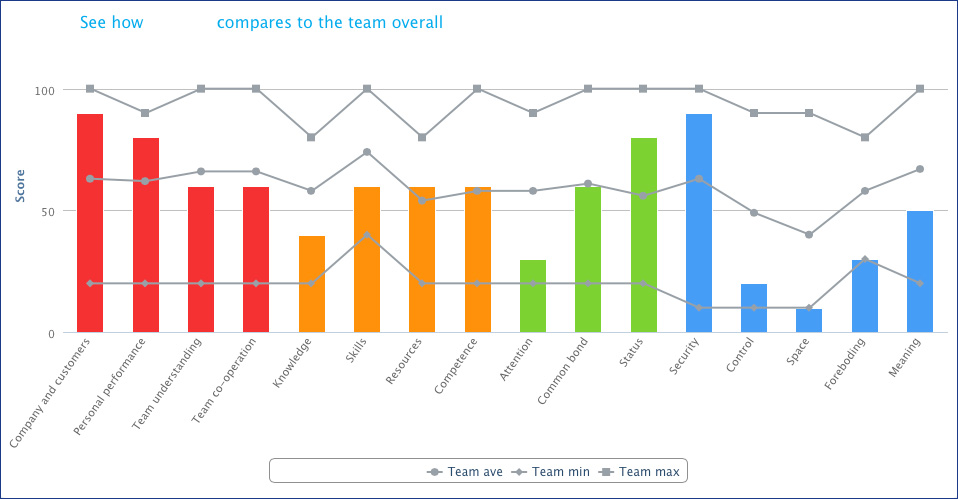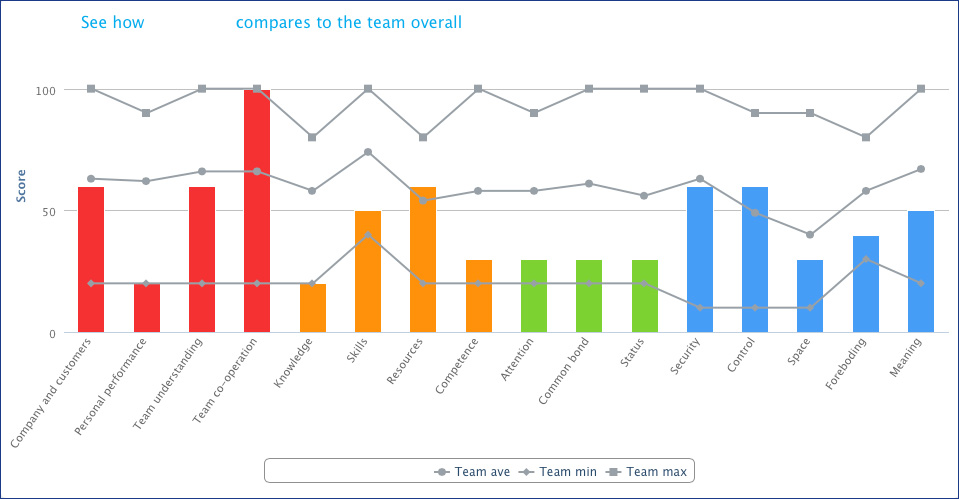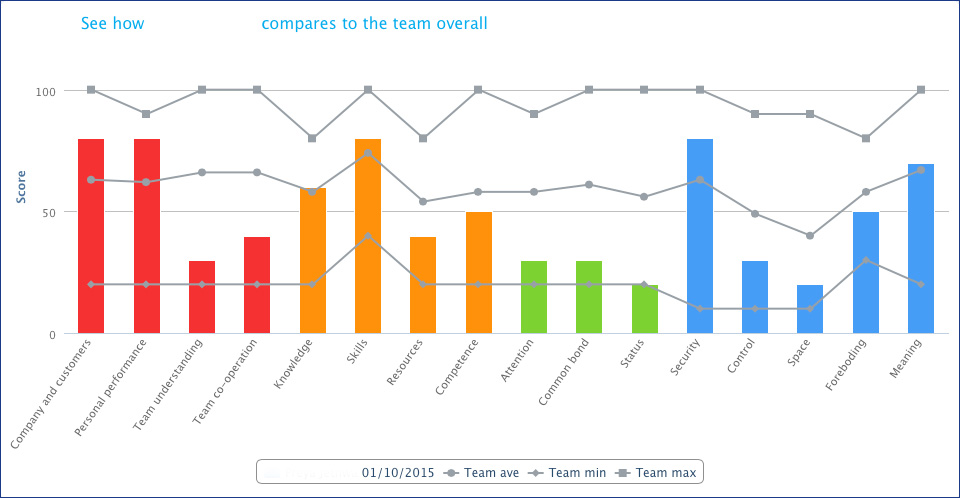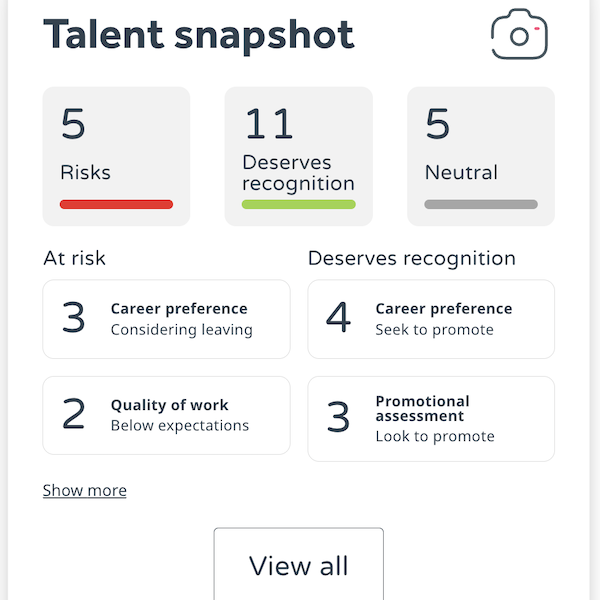There are plenty of tools out there to boost employee engagement, and they all produce impressive-looking reports. So far so good, but the hard part for managers who have to do something to boost employee engagement is just that – what do you actually do to boost employee engagement?
It’s all very well having pages of output showing staff in different quadrants, but it’s action that makes things change. Well, WeThrive is unlike other engagement tools for a number of reasons, and the main one is this:
WeThrive shows you, for each person, what is wrong and what to do about it.
Here are four examples of the kind of scenarios We Thrive reveals in organisations of every kind. WeThrive asks people how much of the time their needs are met at work, as defined by the 4C model for intelligent performance. Other systems cover some of the same ground, and the domains all relate directly to important factors in human motivation like clarity of purpose, connection with other people, availability of necessary skills and resources, security, autonomy or control, work being meaningful and so on. Check our downloadable resources page for more information on the 4C model, or grab the podcasts in iTunes so you can hear all about it on the way to work.
The bottom line is that some of your staff are probably feeling like these people, and you really need to know about it…
Scenario 1
Here’s someone who feels well connected to the aims and users of the organisation, but is let down by their knowledge and skills and doesn’t feel competent as a result. This is compounded by a lack of attention from the manager and unsurprisingly the rest of the team doesn’t seem to have the same picture of what to do. The result will be frustration and, as we can see, a severe feeling of being out of control, overwhelmed and worried about forthcoming work. It’s not surprising that the work doesn’t seem meaningful either – this looks like someone in danger of leaving – but it could probably be sorted out with training, better communication and more attention from the manager.
Scenario 2
Here’s an unfortunate staff member with a very limited idea of what exactly (s)he is supposed to be doing, and (unsurprisingly) very little grasp of the knowledge and skills needed to do it. No wonder there is no time to clear the mind between tasks, and so no clarity when it comes to start something new. This person is also isolated from the team socially, spends a lot of time worrying about work, and is not going home feeling that it meant something to be there. This could be someone new to the firm or someone who is about to leave…
Scenario 3
Here is an example of someone with a good grasp of what they are supposed to be doing. He/she also feels adequately skilled, but is disconnected socially, lacks resources and (probably as a result) is feeling overwhelmed and out of control. This is a very frustrating position to be in, and it would be unsurprising if this staff member was looking for something else, but coaching conversations based on the problems identified by WeThrive would be the crucial step to boost employee engagement.
Scenario 4
Here’s an employee who on the face of it is doing rather well – feels secure and in control, is feeling well-connected socially and feels adequately skilled and resourced. However (s)he lacks certainty about what exactly to do in some situations, could so with more background knowledge related to those tasks, is not sure the rest of the team is cooperating and (perhaps as a result) is worrying about forthcoming work. How much better could this otherwise well-sorted person be doing if the line manager knew about these issues and was able to help?
There’s nothing odd or disastrous about the organisations these staff work in, this is normal – it’s how people so often feel about their work. Their management didn’t know about these issues until they ran WeThrive – how could they, many of the factors in the 4C model are human needs that work in the background, changing the way we feel about working life, so they don’t get expressed in words until the situation is really hard to bear. Take a free trial on us to see what the picture is with you…
WeThrive brings the unseen social and emotional factors into the open, together with the practical matters of communications and resourcing, so you can see the whole picture and do things that make it work better. For the first time there is a practical, affordable way to improve the whole of working life – the prize is a satisfied, engaged team that are not only able to do what you need of them, but want to do it because it meets their needs to do so. How cool is that?





